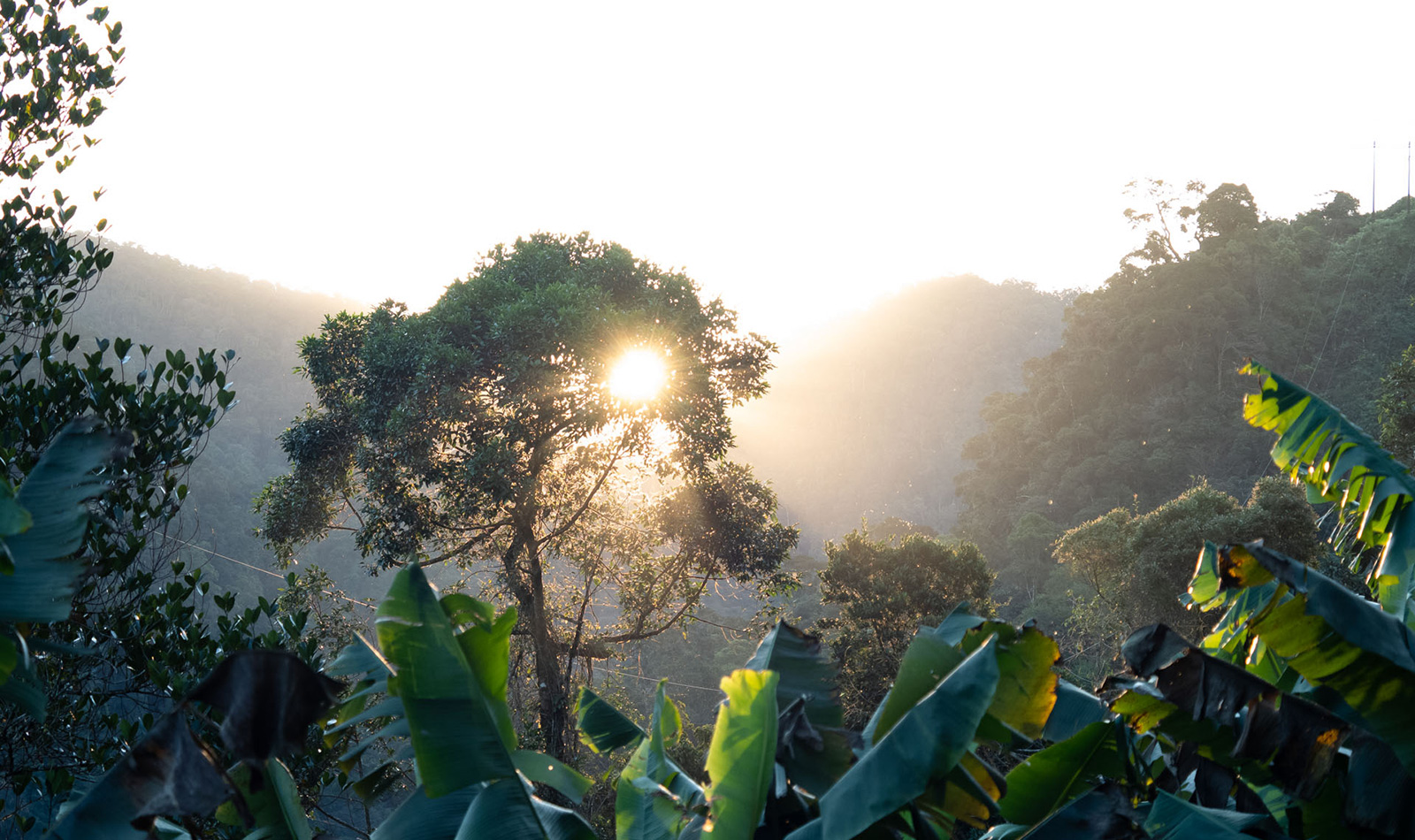The Wildest Journey
Traversing the Length of Madagascar’s Mangoky River
Written by Chaz Powell // Photography by Nina Wiesmeyr
We found ourselves in a small village of heavily armed men, brandishing machine guns and aggressively shouting towards us in Malagasy. This was unlike any village we had entered before. A toxic, unstable atmosphere engulfed us, and our guides nervously ushered us all to position ourselves down by the wall of a small village hut. We hunkered down, waiting cautiously. Anxiously. Eyes, fixed upon us, surveyed our bags and belongings. We had found our way into a village of the Masalo: Madagascar’s infamous armed bandits.
I have always felt deeply curious about Madagascar’s vast diversity – and have always been intrigued by its wild and untouched environment.In the build-up to the expedition, I heard stories about the lawlessness of Madagascar’s central core. I was unable to find much information about these areas, except that they had mainly been classified as being outside the law-enforcement zone. Places that people dare not venture due to fears of robberies, kidnappings, and murders. I had also heard the worst sections were in the southern part of the island – close to where we would be crossing by foot from east to west while traversing the length of the Mangoky, Madagascar’s longest river.
I also heard stories about the colossal levels of deforestation, and the decline of endemic species throughout the island. A lot of the stories mentioned the charcoal industry – and the fact that it is relied upon by about 90 per cent of the population for their basic cooking needs. This has unfortunately resulted in forests all but disappearing throughout many parts of Madagascar, which has caused many of the protected wildlife reserves to shrink beyond belief.
Our journey began in the small city of Manakara on the country’s eastern coast. For the first week we would need to trek 170km through the country’s interior, along the jungle rail line and into Madagascar’s Central Highlands, before then pushing towards the headwaters of the Mangoky River.
The further we pushed up the tracks, the wilder and more remote the environments became. With this change in wildness came a sudden change of atmosphere at each station-side village we passed through. The villages were often tainted with an air of lawlessness. Local people became more and more concerned for our safety the further we pushed on. We brushed off these concerns, however, and eventually started to veer away from the hostility of the train line to enter the Central Highlands and the doorstep to the Mangoky River’s headwaters.
Before we could reach the main channel of the Mangoky, the river divided itself into a few separate rivers, each with many tributaries and channels. Information was contradictory, but the Matsiatra River seemed to be the most dominant of these tributaries. After reaching the Matsiatra’s marshy beginnings near the small village of Sahalavo, on the outskirts of Fianarantsoa, we then slowly started weaving along the river’s shallow edge. Its banks were initially lined with a maze of rice fields, where local villagers tended to their rice crops. The rice fields seemed to act as a barrier between us and the villages; we slipped and slid along this interconnecting maze, glared at by confused onlookers.
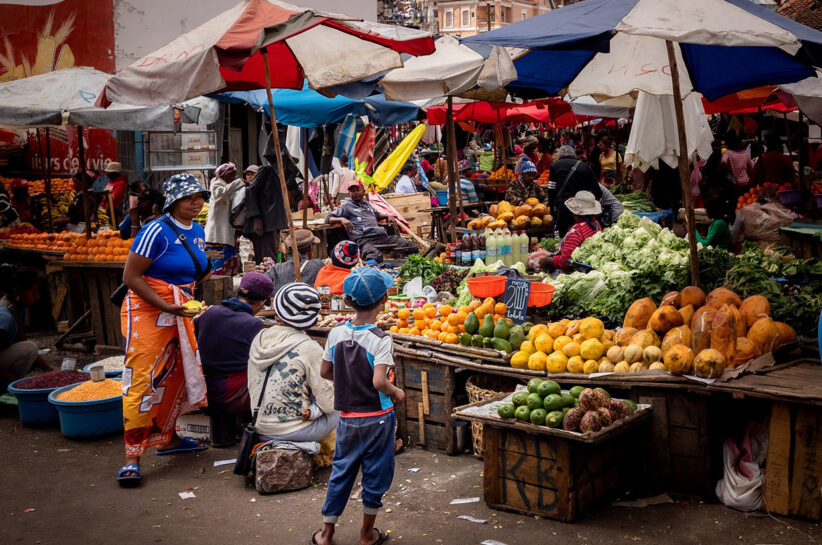
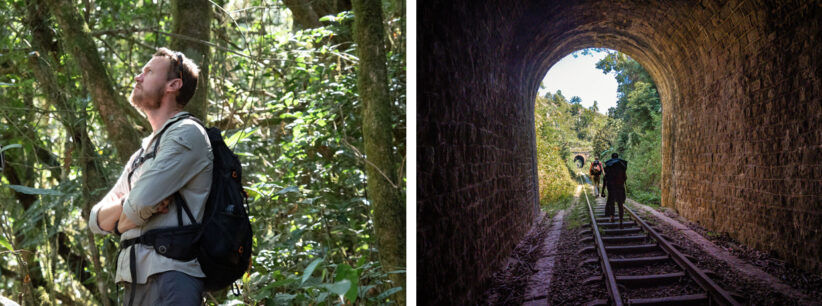
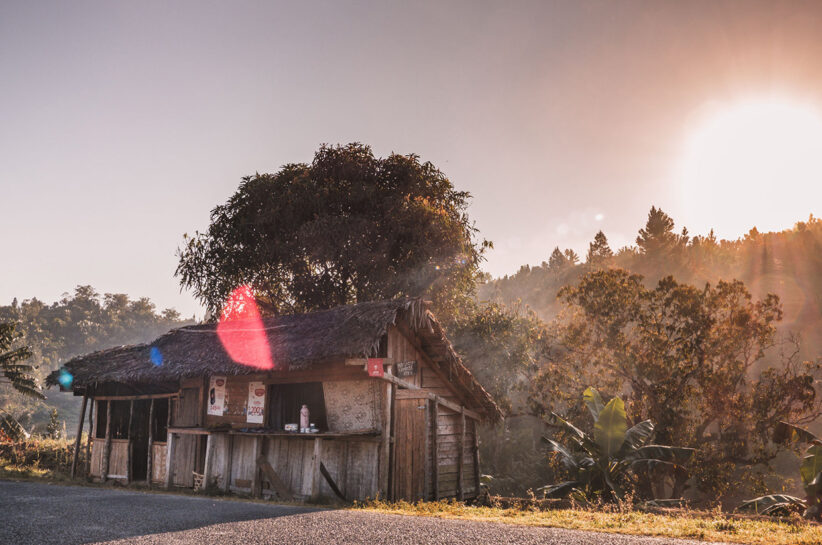
The warnings from locals about the dangers ahead still echoed in my mind. But, despite our concerns, we felt the need to enter every village – not only to explain our objectives, but also to be respectful and to find out about any safety concerns for areas we would be passing through.
It wasn’t until we reached the small village of Isaka, and sought an audience with the mayor, that this truly started to hit home. ‘If you continue following the Matsiatra,’ he told us,’ you will likely run into the Masalo. You will be kidnapped, robbed, maybe killed.’ The Masalo, I knew, were armed cattle rustlers who did not hesitate to use force.
The mayor assured us that if we were to cross overland to another of the Mangoky’s tributaries, the Mananantanana River, then we should be safe until eventually reaching the Mangoky’s main channel. He also advised us to take armed protection and insisted that some of his guards accompany us to the next village.
***
Crossing to the Mananantanana was not straightforward. It required us to cross several mountain ranges and wade through many rivers flowing from valley to valley – and crocodiles stalked these rivers.Our main guide was a tall guy with a large knife strapped to his leg and an air of streetwise strength. He was accompanied by two others; one brandished a spear, the other a large hook and sharp metal pole. They had a system. One would enter the village to let people know about our movements, another would be navigating, and then the main guy would act as the muscle. But the pace they set was exhausting as we struggled up and down the steep and mountainous terrain. We summited mountain plateaus and waded fast-flowing, chest-deep rivers.
When we reached our destination for the night, at the village of Fanjakana, we were joined by a new group of five young guys – all of them eager for an adventure, and armed with spears, knives, and large metal bars. Not long into this section we noticed that something had been carved into the dusty trail. It was an outline of a head with a noose at its base. Worryingly, our guides pointed out that this was a sign left by bandits to indicate their presence in the area. It was also our first indication that the Masalo were in fact very real – an encounter that heightened the sense of danger we had all being suppressing.
As we marched on, through a devastated landscape of burned and harvested forest, I couldn’t help but feel frustrated by the evidence of deforestation everywhere. At the same time, I understood the reality faced by people as they scraped to survive and build a life for themselves.
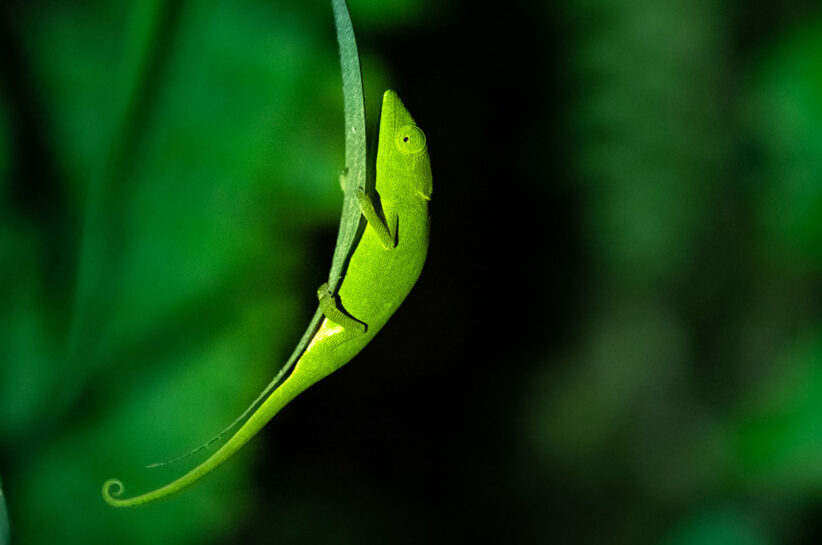
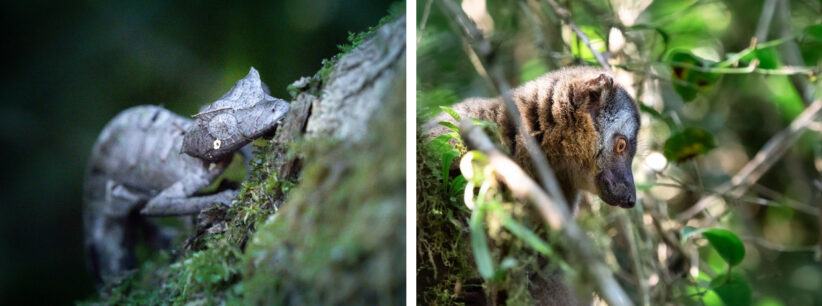
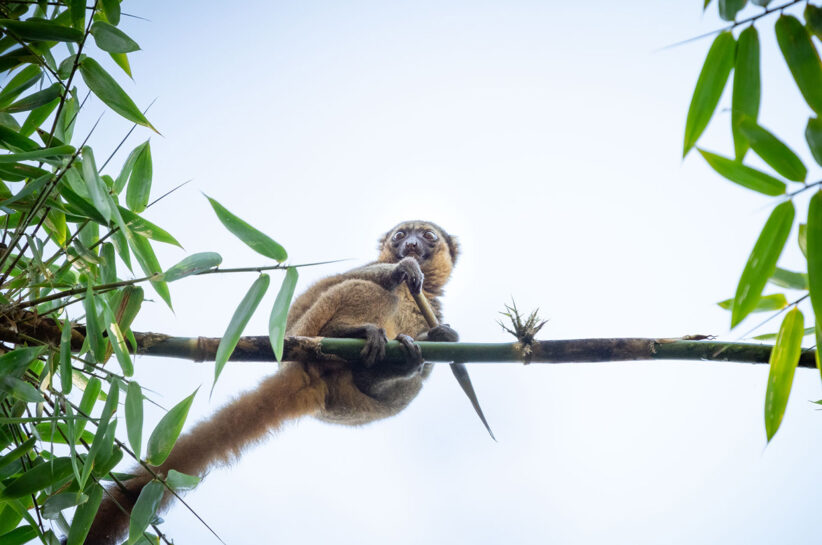
After an arduous day of pushing ourselves onwards, we eventually reached the outskirts of a small but well-maintained village, with large fields of crops and a gentle stream flowing towards a narrow treeline: something we had learnt to be a clear indication of a shaded village.
The village slowly came into view as we meandered down the lush green valley. Our guides entered first with the rest of us following closely behind. This place felt unlike any village we had entered previously. The men were smartly dressed, but I noticed guns propped up outside their huts. I saw no sign of women, children, or families: a sure indication that something wasn’t right.
***
On reaching the village centre, we were immediately directed to sit down by the wall of a cobbled hut and wait there. Meanwhile, our guides – who did not speak English – entered a building to speak to the village elders on our behalf. I began to feel a prickling, creeping sense of unease. The tension grew as we waited. The atmosphere in this village seemed strange – almost unstable. The men, crowding around us now, looked us up and down, openly surveying us and our belongings. For an eternity we waited for our guides to come out of the building. Finally, the door opened and out they came, one by one, heads bowed as they walked back towards us. Our head guide didn’t speak English but the anxiety was written on his face. I quickly muttered ‘Andao [let’s go],’ and he nodded in agreement.
But the villagers didn’t seem to want us to leave. One of them got right up in the face of our head guide, looking down on him in an intimidating manner and speaking aggressively. Once again I muttered ‘Andao’ and we all started to head out of the village, briskly heading up towards a hillside. All the while I kept looking back, praying that no-one followed. Luckily, they didn’t. From here, we headed over some of the biggest mountains we had faced, pushing hard to get some distance done – and managed to do our biggest day of 40 miles. It had also been my 40th birthday, so these 40 miles seemed fitting for the occasion. Just as we reached the summit of our final peak, the majesty of the Mangoky River suddenly came into view deep down in the valley below. It was a massive morale booster for us all after the toughest day for a while.
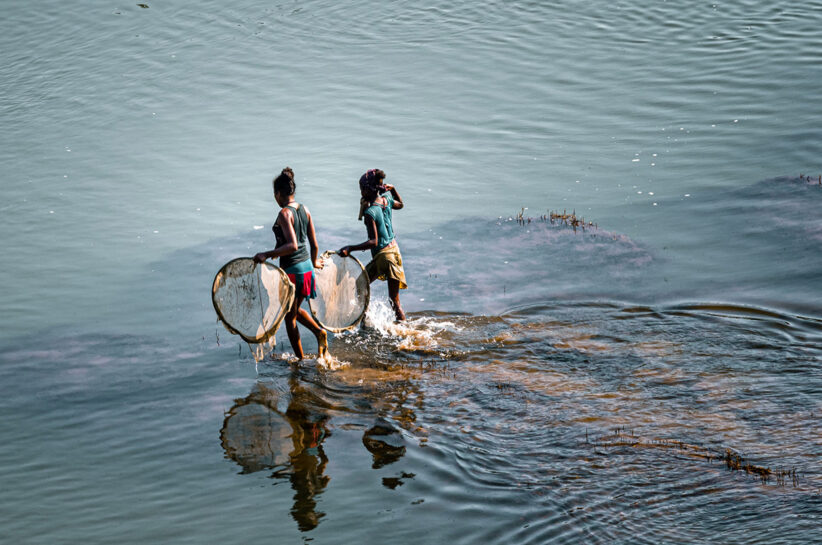
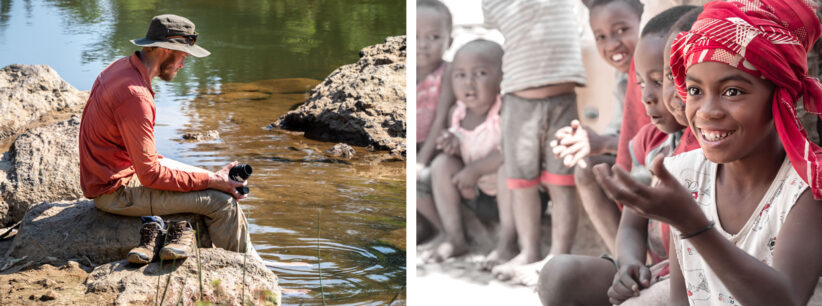
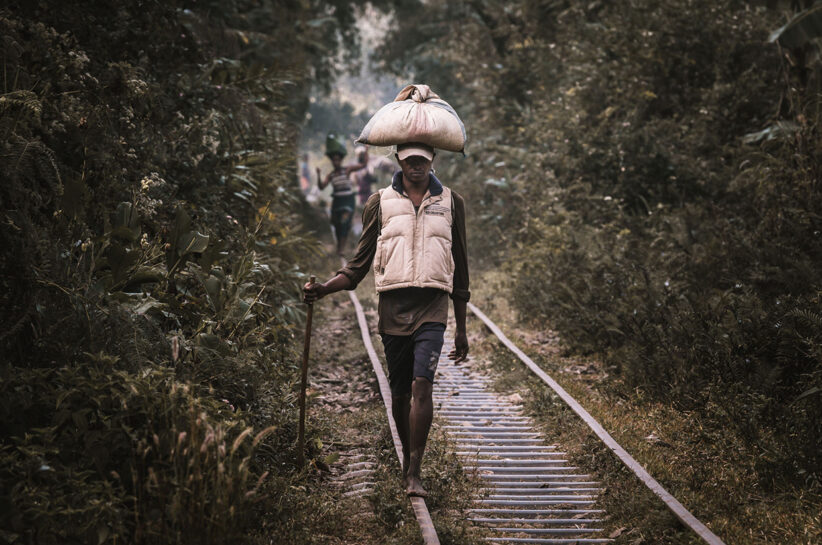
As we headed down into the fading light of day, we waded the river and reached the small town of Baroha – a place where we felt so much safer. A huge weight had suddenly lifted from our shoulders. The village head man, who spoke fluent French, informed us that we had indeed passed through a village of the Masalo. Two factors led to their reluctant decision not to harm us: first, because our guides had talked to them, and second because some had previously been arrested for attacking tourists. We all knew we had been extremely lucky to get through there unharmed. Suddenly I felt completely overwhelmed that we had unknowingly passed through a village of the infamous armed bandits.
Reaching Baroha, we had left the known bandit territories. Now we only needed to traverse the Mangoky’s main channel all the way to the ocean on the island’s west coast. The final week along the river was by far the most fascinating part of the journey. It involved walking along tranquil beaches that skirted the river’s edge, and whenever we hit any obstacles or thick patches of overgrowth we had to wade through the river and head to yet another beach on the opposite side. We had all realised at this point how accustomed to this life we had become. At the beginning of the journey we would have been in a panic at the thought of evading the crocodiles in these rivers, but now it had all become part of life on the journey.
When we finally reached the ocean on Madagascar’s western coast, we had not only walked across the island from east to west, but had also just become the first known people to walk the length of the country’s longest river, the Mangoky. From evading the Masalo to successfully navigating a maze of wild and unstable environments, this expedition had tested us all to our limits. It had also been a journey that had seen us rely upon the kindness of strangers: people who guided us through, putting their own lives at risk, all the time watching our backs to ensure our objective was complete. I feel extremely fortunate to not only have survived this journey, but also to have experienced the real Madagascar and the wildness at its heart.
Written by Chaz Powell // @thewildestjourney // thewildestjourney.com
Photography by Nina Wiesmeyr // @ninawiesmeyr // nw-photography.net



